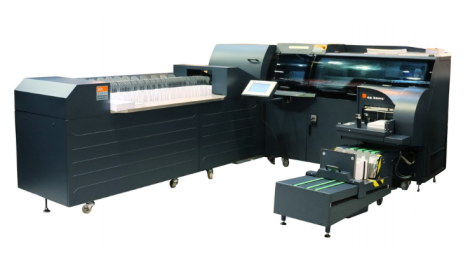The weekly Verdigris blog by Laurel Brunner
Many printing companies around the world have rainwater capture systems which they use to water their shrubberies and lawns, or for flushing toilets. Not many of them see making their car parks and loading bays look pretty as being of benefit to the wider community. However they might want to take a closer look, especially in water starved parts of the world, such as India or Australia and California.
A study has found that in addition to saving on water bills, collecting rainwater for irrigation can benefit local communities, especially if the water is used for small plots of fruit and vegetables. In India for example it was found that using collected rainwater for vegetable irrigation increased caloric intake and in some cases provided a source of income.
Rainwater harvesting isn’t a new idea, but in countries such as India collecting in water tanks is apparently not very common. For large printing companies harvesting rainwater and somehow routing it or otherwise making it available to the local community could be an interesting venture. It is certainly the sort of thing that can burnish a company’s environmental credentials, as well as its local profile.
An industry’s environmental credentials are not easy to define, but customers are starting to care more about them. Big brands are looking for environmental initiatives that they can present to shareholders and financial markets as evidence of ecological engagement. This is deemed to be a very good thing, however it doesn’t necessarily mean that the shareholders or management are particularly concerned about the environment. Mostly they just want to be seen to care. As with so many other things, demonstrating commitment to improving the planet’s health is largely a matter of box-ticking, especially for big businesses.
Perhaps that is the only way we can expect to see ambitious change? Bug business needs defined processes for managing environmental impact, with goals and objectives that get ticked off the list as they are achieved. It’s also likely that big business anticipates ever tighter regulatory controls, which is why they are increasingly setting up processes to make their supply chains environmentally accountable.
In industries like printing, where most businesses are relatively small and often family owned, it is much easier to make a difference without palavering on about arcane processes and Key Performance Indicators. Such businesses can implement basic changes, like rainwater capture for the benefit of their local communities, and that is where a real difference can start to be made. A printing company’s grass roots commitment to change and ecological projects is a way to burnish environmental credentials, but it’s also a way to make a tangible difference.
http://verdigrisproject.com/blog/water-water-everywhere
This article is part of the Verdigris series of stories about understanding the environmental impact of print. The Verdigris Project is supported by Agfa Graphics, Canon Europe, Digital Dots, drupa, EcoPrint, EFI, Fespa, HP, Pragati Offset, Ricoh, Splash PR, Unity Publishing and Xeikon.





